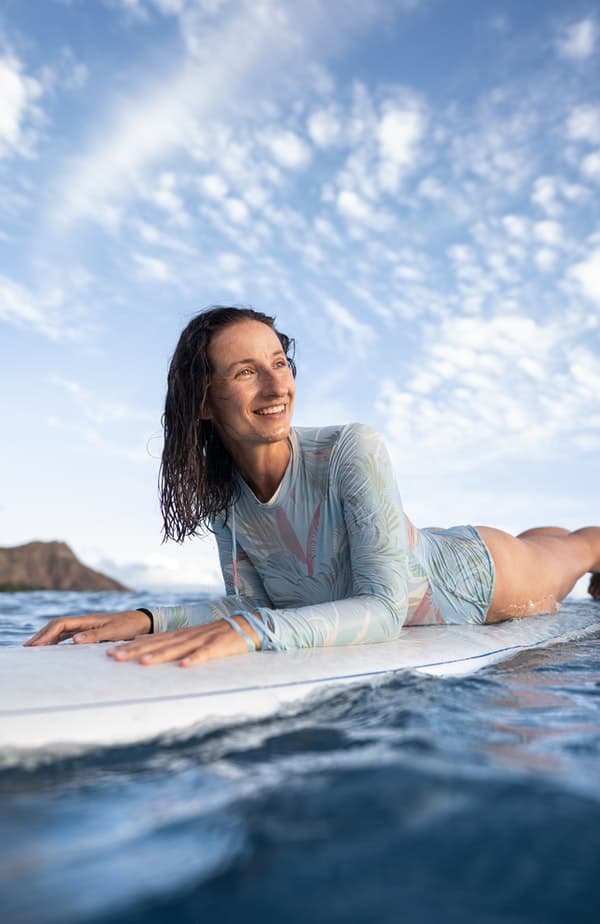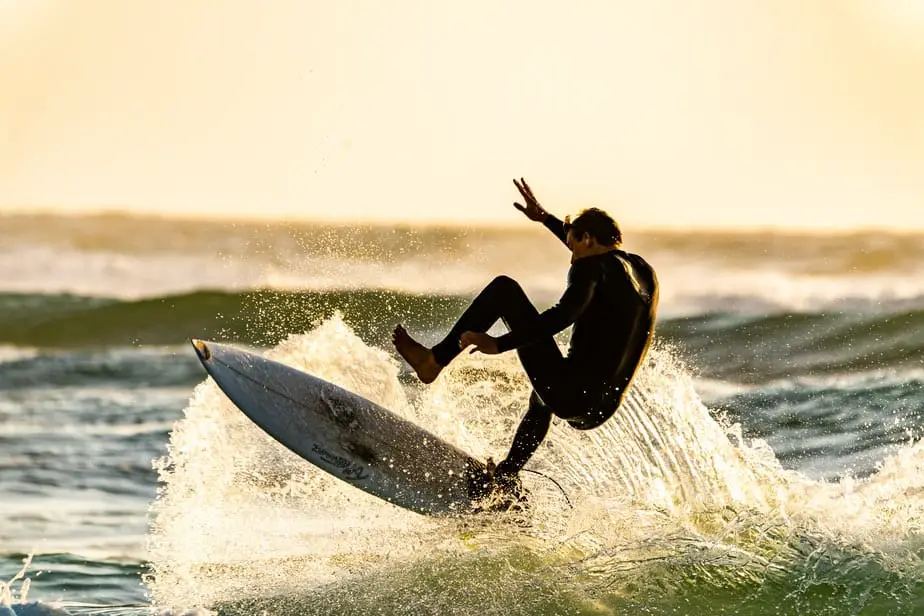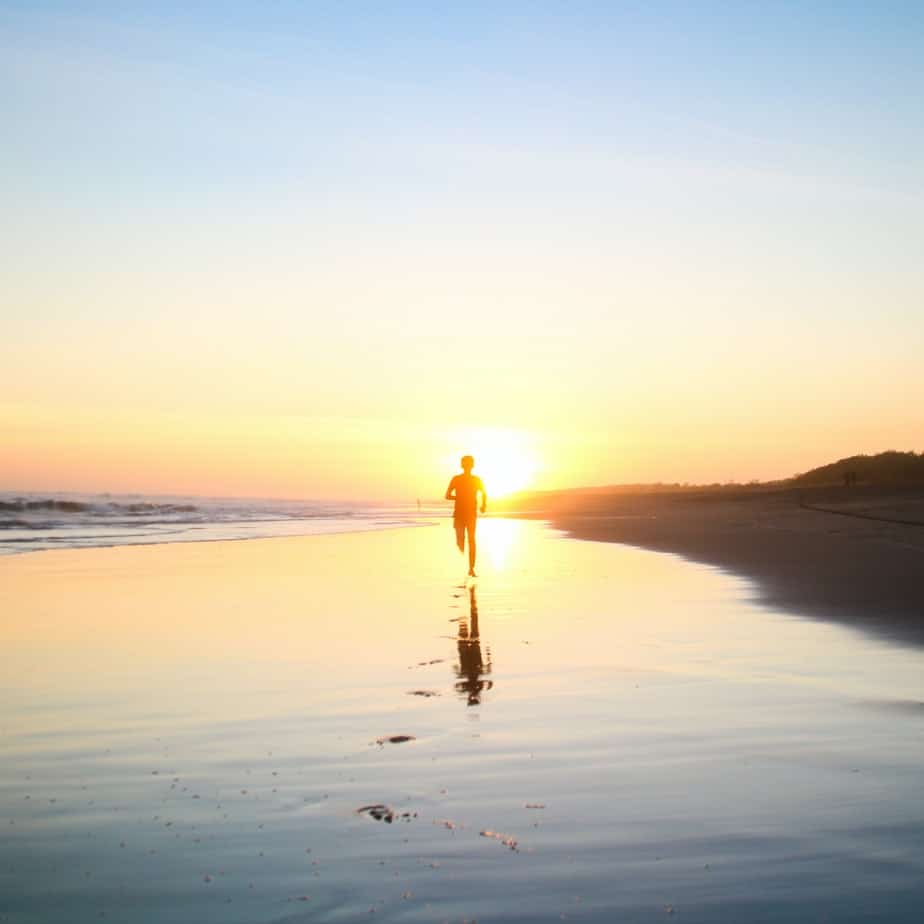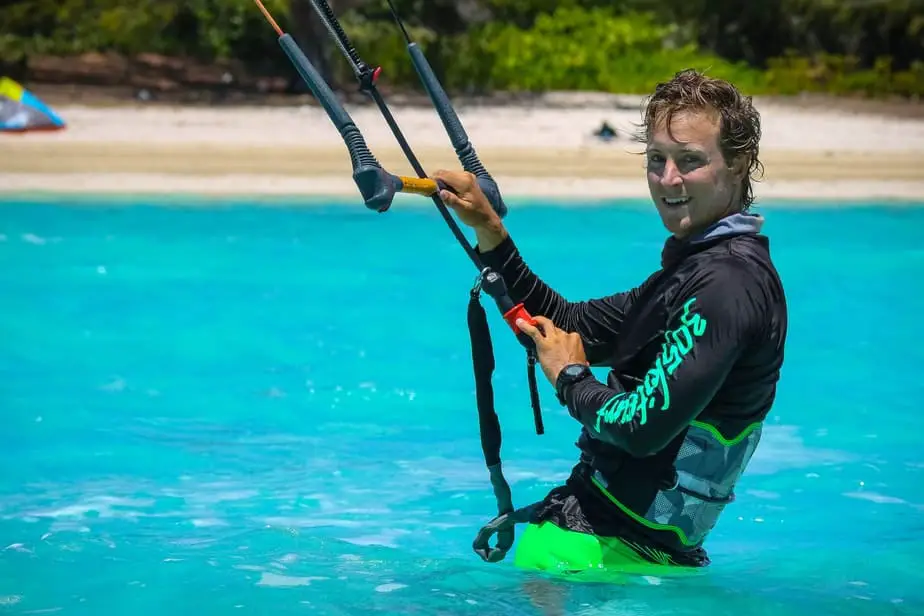Not everyone wants to wear a wetsuit to stay warm, so many people are turning to rash guards to keep them warm while surfing, kitesurfing, snorkeling, and other similar water sports. Can rash guards keep you warm the way wetsuits can?
Rash guards are a type of swimwear that can provide a little bit of warmth on their own, however that is not their primary purpose. In fact, you should not be expecting a rash guard to keep you warm in temperate or cold waters at all; they are best suited for warm water use or to be worn underneath a wetsuit as a base layer. In warm waters, you can be kept comfortably warm.
In this article, we’ll go over the various benefits that rash guards provide, including how they can keep you warm, and why this versatile piece of clothing should be used by everyone who participates in water sports.
How effective are rash guards at keeping you warm?
Rash guards are not very effective at keeping you warm. That’s what a wetsuit or drysuit is for. Rashies are quite thin, often with a thickness of only 1.5mm and made of breathable material like lycra and polyester.
That’s not to say that rash guards don’t provide any warmth, just that you shouldn’t expect to wear it in cold water or on an extremely windy day and expect to feel cozy. Instead, what you can do is wear a rash guard underneath a wetsuit to provide an extra layer of warmth.
There are some rash guards that are specifically designed to provide protection from the cold. They are constructed from thermal materials such as neoprene, which is the same material wetsuit are made of. However, if you have to resort to this then you might as well just wear a wetsuit instead.
Just how much warmth does a rash guard provide? Again, not much. You can perhaps expect to feel one or two degrees warmer in the water. If you’re wearing a rashie just for warmth, you’re using the wrong tool for the job; a wetsuit is way better for heat retention. With that said, rash guards are beneficial in many other ways, and when paired up with a wetsuit they can make you feel extremely warm.
Do I need a rash guard?

When people think of a rash guard, they often only think about the shirt portion that either has long or short sleeves. However, the term rash guard also encompasses the protective leggings, which can also be long or short, and offers the same protection for the lower half of the body. Together, they provide a layer of protection kind of like a second skin, against various dangers present in water sports activities.
Rashies can be made from various materials, from spandex, nylon, polyester, all the way to luxurious fleece. It will protect your skin against constant rubbing against equipment, minor cuts, the cold, and even the sun’s UV rays. While the protection it provides is limited, it’s better than nothing. Overall, they are a lightweight and breathable solution compared to a wetsuit. In fact, you can wear a rash guard underneath a wetsuit for even more protection!
Types of rash guards
You can find three different types of rash guards:
- Long sleeved.
- T-shirt (short-sleeved).
- Sleeveless (a.k.a. Rash vests).
We’ve mentioned already that rashies can come in various thicknesses, depending on your needs. To help you narrow down which style is best for you, consider what activities you plan on doing while wearing the rash guard.
If you want total protection and as much warmth as possible, obviously you want to go for the long-sleeved variety. If you want to flex your guns, then a sleeveless vest would be the ideal choice. If you’re going to be spending your time lounging around and occasionally going into the water, a T-shirt rashie will offer a good mix of protection and comfort.
What is the purpose of a rash guard?
They are an alternative to wetsuits for warm water activities
If you’re surfing, snorkeling, or diving in warm waters and you want to layer up without resorting to a wetsuit, what are your options? This is the perfect time to wear a rash guard. Rash guards are made out of quick-drying material, and they offer some protection without being as restrictive or hot as a wetsuit.
However, if you will be in cold or even temperate waters, rash guards aren’t going to cut it anymore. In this case, they can still serve a purpose by providing a base layer underneath your wetsuit. If you decide to do this, then you need to make sure your wetsuit has some extra space inside to accommodate your rash guard.
One of the great things about rash guards is that, like wetsuits, they come in various thicknesses. They are typically around 1.5mm, but if you need more insulation, you can get a thicker one. For warm warm activities like swimming, a thinner rash guard will do do the job.
They protect against chafing
The primary objective of a rash guard is to protect the wearer’s skin from chafing and rashes. This is a well-known issue in the surfing community that the wax applied to surfboards, salt from the ocean, and friction of your skin against the surfboard and clothing can cause extreme discomfort.
Rash guards are constructed from flexible, breathable materials so that they do not chafe your skin or restrict your movement. Furthermore, some rash guards have a UPF-50 rating meaning they can block the majority of the sun’s harmful UV rays so that you don’t get sunburnt.
They provide some warmth

The average rashie does not provide much warmth, but the material it is made from will make a big difference. Many larger brands are now making rash guards with fleece material, or thermal rash guards, and they are comfortable and much warmer than your standard one. With that said, they cannot compare with the insulation that a wetsuit can provide.
A typical rash guard made of nylon, spandex, or polyester and worn on its own will not provide much protection against the cold. Most rashies are only 1.5mm thick, so they are considerably thinner than a wetsuit which is often 3mm or thicker, and made from a very effective insulating material called neoprene. However, you can wear a rash guard AND a wetsuit together, so it’s not like these are competing pieces of gear.
Furthermore, thanks to how breathable rashies are, they are also quick drying and very comfortable. Outside of the water, the increased air flow will dry your skin and the rashie faster, making you feel warmer. Some rash guards are also wind-resistant and will keep cold air from chilling your skin. A cheap rashie will not be able to provide much warmth, but a high-quality one sure can.
They protect against cuts and marine life
You never know what might be lurking in the water. It’s very easy to get cuts from sharp rocks, coral, or debris. It’s also easy to get stung by jellyfish and to come into contact with sea-lice that can irritate your exposed skin. Though rash guards are light, they do provide a protective layer so that you can minimize damage.
Creatures like sea-lice, anemone, and jellyfish often sting through light touch. A rash guard can actually be effective at protecting you from these light stings. What a rash guard will NOT protect you from are sharp stings such as from a scorpionfish or an urchin spike.
They provide sun protection

If you’re going to spend many hours in the sun, you’re going to need some sun protection. What better way than to wear a rash guard? There are some rash guards that have a UPF rating (the equivalent of the SPF rating for sunscreen, but for clothing), which means they are designed to block UV rays from penetrating the material and reaching your skin.
Beware of purchasing a rash guard that does NOT offer any UV protection. Furthermore, do not think that any piece of clothing offers adequate sun protection. You must specifically wear clothes with a UPF rating in order to be protected. Low quality rash-guards may be weak and fail to provide sun protection or warmth.
The great thing about wearing a rashie for sun protection is that, unlike sunscreen, you do not need to reapply it. It covers a large portion of your body and will help you conserve a lot of sunscreen. You still need to wear sunscreen, but only on the exposed areas of skin and not your entire body. Apply reef-safe sunscreen on areas that aren’t covered by the rash guard 30 minutes before heading into the water for the ultimate protection.
They can be used for land sports
Rash guards are popular for many water sports, such as SCUBA diving, swimming, kayaking, kitesurfing, SUP boarding, snorkeling and the like.
With that said, these lightweight shirts can be worn for any physical activity where you want to protect the skin from chafing and cuts. Since rashies are so breathable and fast-drying, any water or sweat will quickly evaporate from it in no time. In other words, they are just so comfortable and versatile.
Rashies are commonly used outside of the water for activities like mixed martial arts, baseball, and even football. As you can see, these are all activities that require great mobility which could lead to chafing if one doesn’t wear a rash guard. Professional athletes will often wear rash guards under their uniforms.
Furthermore, just like how rashies can offer minor protection against cuts in the ocean, they can do the same in combat sports like jiu-jitsu where cuts, burns, and infections are commonplace. To sum it up, rashies are flexible and lightweight enough to allow for unrestricted movement and are quick-drying thanks to how breathable they are.
How to wear a rash guard
Rash guards can have a tight fit like a wetsuit, or they can have a loose fit. Most people prefer a tighter fit, like a second skin, because it is more functional. The more form-fitting it is, the less room for water or debris to get underneath.
Furthermore, if there is less (or no) excess fabric getting in the way or producing drag, then wearers can swim and move around much easier. If you are a SCUBA diver or surfer, you definitely don’t want the extra risk of getting tangled up in your own gear.
However, if you plan on spending the majority of your time on land, or the climate you’re in is extremely warm, then a loose-fitting rash guard, perhaps even in the T-shirt or vest style, could work fine. As long as you’re safe and still able to do what you want, it’s all down to personal preference. Some people find tight clothing to be claustrophobic and would rather wear looser clothing.
Parting words
Overall, rash guards do not provide much warmth however they are extremely effective at protecting the skin from rashes, the sun, and various skin irritations. There are various factors to consider when purchasing a rashie, such as the type of style, how tightly it fits, if it has a UPF rating, and so on.
If you really want to stay warm with a rash guard, they can be worn underneath a wetsuit for yet another protective layer. Even on its own, you can expect it to provide minimal warmth depending on how tight fitting it is. A loose-fitting rashie will allow water to constantly flush through the suit and sap your warmth. A more form-fitting one can may be able to insulate some of your body heat. If you truly want to stay warm in the water, get a wetsuit instead.


